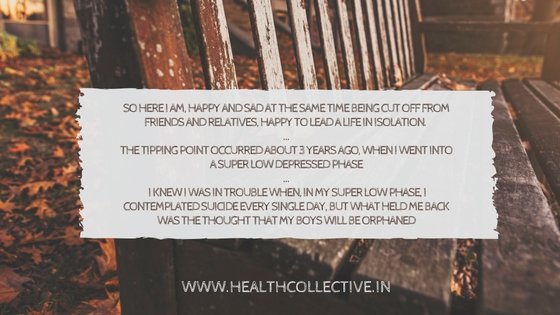Understanding Trauma Therapies
By Scherezade Siobhan
In Poetry and Memory, James Applewhite writes – “Memory is always allowing itself to be used, but won’t be coerced; there are better strategies than head-on pressure. Memory has its own processes and its own selectivity. Scenes, faces, bits of story that rise up spontaneously are thus more likely to have an emotive significance than those memories we might deliberately call up.”
Trauma can often batter dissension into the reservoir of memory. The recognition of triggers can emit a flood which then tries to uproot the mindfulness of the present moment and replaces it with a past incident or phase of time that seems interminable.
Trauma survivors have to often adapt ways in which the waves of remembrance are not coercive and damaging. As mentioned in my last article, there are standard and direct therapeutic ways to heal from trauma, however we also have at our disposal a combination of alternative healing methods that can supplement direct therapeutic interventions to create a more holistic experience of wellness. Personally, I am a little aversive to using the term “alternative” because I find it to be a placeholder for marginal and do not wish exclusionary tactics in healing. However, for the purpose of discussion, I am using “alternative” as a term that indicates niche and emergent.
ALSO READ: LIFE BEYOND TRAUMA: A THERAPY GUIDE
1. Trauma Sensitive Yoga is an evidence based treatment for complex trauma and complex Posttraumatic Stress Disorder, developed at the Trauma Center in Brookline, Massachusetts, since 2003 and part of the Justice Resource Institute since 2006. TCTSY is used with children, youth, and adults throughout the United States, Canada, Europe, Colombia, Mexico, Israel, Japan, Australia, and New Zealand. Yoga is a meditative approach to exercising connectivity between mind and body. These exercises allow the participants to feel more rooted in their current moment and develop a dialogue with their own bodies. This can be beneficial for trauma survivors when trying to reestablish a way to be attentive to their physical presence in the world without feeling imperceptible. When participating in TSY, one has to be mindful of choosing a qualified trainer who will be able to provide guidance both for the bodily and the cognitive awareness that ensues.
2. Somatic Bodywork – Somatic therapy is centered in the belief that the mind and the body aren’t disparate or uncoordinated chapters in a person’s life story. This form of therapeutic intervention disputes a common and arbitrary bifurcation between the body and the mind. The locus of strength is an assemblage of ways that orient the mind and the body to be better friends to each other and allowing space for that to occur. In trauma relapses, a client often oscillates between states of dis-regulation (arousal, hypervigilance, sudden shock, freezing, continued panic & anxiety as well as physical pain & numbness) and regulation (restoration to a calmness, awareness of self and environment without threat perception).
Somatic therapy designs itself around a kind of enablement where a person is provided resources and learns how to steer their dysregulated states towards regulated states. Peter Levine, a renowned trauma specialist, often speaks about how experiencing any kind of trauma can lead to a person dissociating from their physical self particularly when the recall/relapse of the original traumatic event occurs.
This form of intervention can take various shapes and routes including dance & music therapy, guided imagery meditation, progressive muscle relaxation et al. Finding someone whom you can engender a trusting and comfortable interpersonal relationship is crucial to somatic therapies.

3. Expressive Therapy – Despite the success rate of most conventional trauma therapies, there tends to a considerable percentage of dropouts on account of PTSD avoidance syndrome and the clear fact that a lot of regular talk therapy involves long-term commitment which might seem excessive or insurmountable to a survivor in the beginning.
In order to ease oneself into seeking help, expressive therapies can be viewed as pragmatic gateways and are fairly uncomplicated. Expressive therapy can employ art and writing as channels for necessary self-expression which helps validate personal experience and feelings. Expressive therapy is less goal-focused and more process-oriented where the task of creating is infused with primacy rather than the outcome. This also speaks directly to the uniqueness and personal healing preferences for a lot of folks. From bibliotherapy to experiential camps & horticultural group therapy, there is a wide array of choices for anyone who is interested to pursue this further.
4. Animal-aided therapy – Guide dogs have been helping folks with disability for a while now. However, a lot of people are not familiar with the fact that therapy and emotional support dogs/animals can help alleviate daily symptoms of post-traumatic anxiety. Trained animals can offer unconditional support and love which in turn can provide a resonant foundation on which someone surviving trauma can build their self-regard. The more functional aspect of having a therapy animal or spending time with one is their ability to help navigate difficult phases or moments including depressive lows or a generalised form of loneliness. A recent study in the US indicated that veterans who spent time in equine therapy showed a massive dip in suicidal ideation. Animal-aided therapy shows real progress when helping people rebuild trust in themselves and their immediate surroundings.
It is always advisable to seek professional inputs before creating the blueprint for your own healing path. A little bit of research and prior knowledge can be fruitful in determining what is the right course of action that largely meets your specific needs.
Alternative therapies are best engaged with when in combination with a more mainstream form of intervention that allows a wider net of support during self-work. Your own self-awareness plays a crucial role as well, for e.g. if your trauma involves an incident with a wild animal, it would be wise to not immediately gravitate towards animal-aided therapy because it might trigger you further. On the other hand, if you have always found solace in the company of dogs and cats, then it might work best for you.
Trauma is an unfortunate reality in the world we inhabit, however it doesn’t need to become our stamped destiny. As the poet Hafiz once wrote –
“Awake, my dear
Be kind to your sleeping heart.
Take it out into the vast fields of light
And let it breathe.”
ALSO READ: MORE IN OUR ASK THE EXPERTS SERIES
Scherezade Siobhan is an award-winning Indo-Rroma Jungian scarab turned psychologist, mental health advocate, community catalyst, and a writer. She is the founder of The Talking Compass — a therapeutic practice that provides in-person, at-home and online counselling for people who need help with emotional and mental health. She is the creator and curator of The Mira Project, a global dialogue on women’s mental health, gendered violence, and street harassment. Send her puppies and cupcakes at nihilistwaffles@gmail.com
Disclaimer: Material on The Health Collective cannot substitute for expert advice from a trained professional
If you would like to share your story, do write to us here or tweet us @healthcollectif




